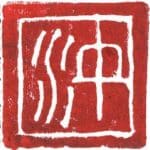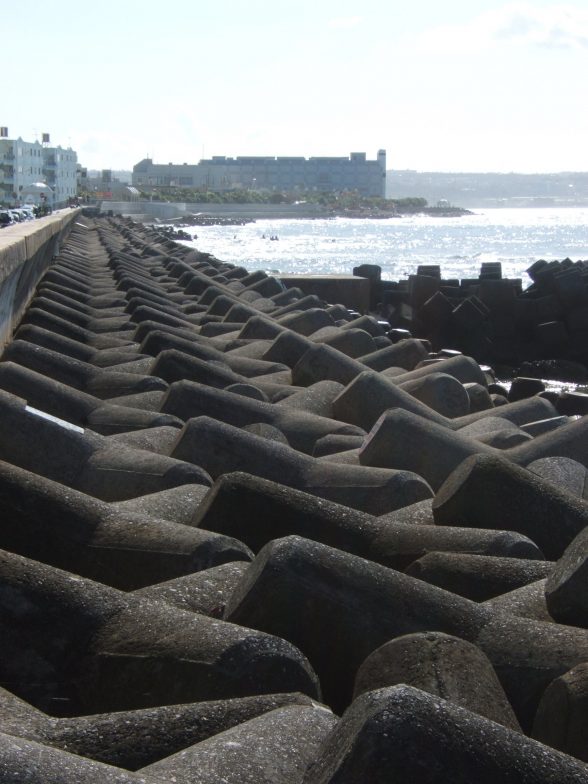CONTRIBUTED BY STACI HAWLEY
I say Sea-jack. The Japanese say Tetrapods. Either way- they are an interesting architectural design that serve quite an important purpose. As my son and I peruse the seawall in Chatan, the Tetrapods provide an interesting hide- and -seek for all things crustacean. If you look long enough, you will be amazed at the ability of nature to cling at something without crags, holes or anything else to grip. So I thought I’d give you some tidbits about these concrete monstrosities that line our seawalls and keep us safe.
Did you know:
* Tetrapod means- The word “Tetrapod” (taken from Greek) means “four-legged” — hence in English it means “four-legged animal”.
* Tetrapods are designed to remain strong despite heave waves and currents (especially because they are arranged in lines or clusters). Good for those of use living along the seawall!
* Japan uses the highest number of Tetrapods.
* Tetrapods actually change the ocean currents.
* In Japanese the Kanji characters translate into “wave breaking”
* Each Tetrapod weighs about 80 tons.
* It would be cool to take one home to the states as a lawn ornament. Not sure it would make the weight allowance, though.
* Tetrapods were created in France in 1950.
* If you have a keen interest in Tetrapods that actually breathe, check here : https://www.ucmp.berkeley.edu/vertebrates/tetrapods/tetraintro.html
* If you want to learn more about Tetrapods and discover where I researched, check here:
https://www.concretebasics.org/clctetrapods.html
* So dear readers, were you fascinated by your first sight of a Tetrapod? Did you find them interesting- or an awkward invasion of the breathtaking Okinawan coastline?

